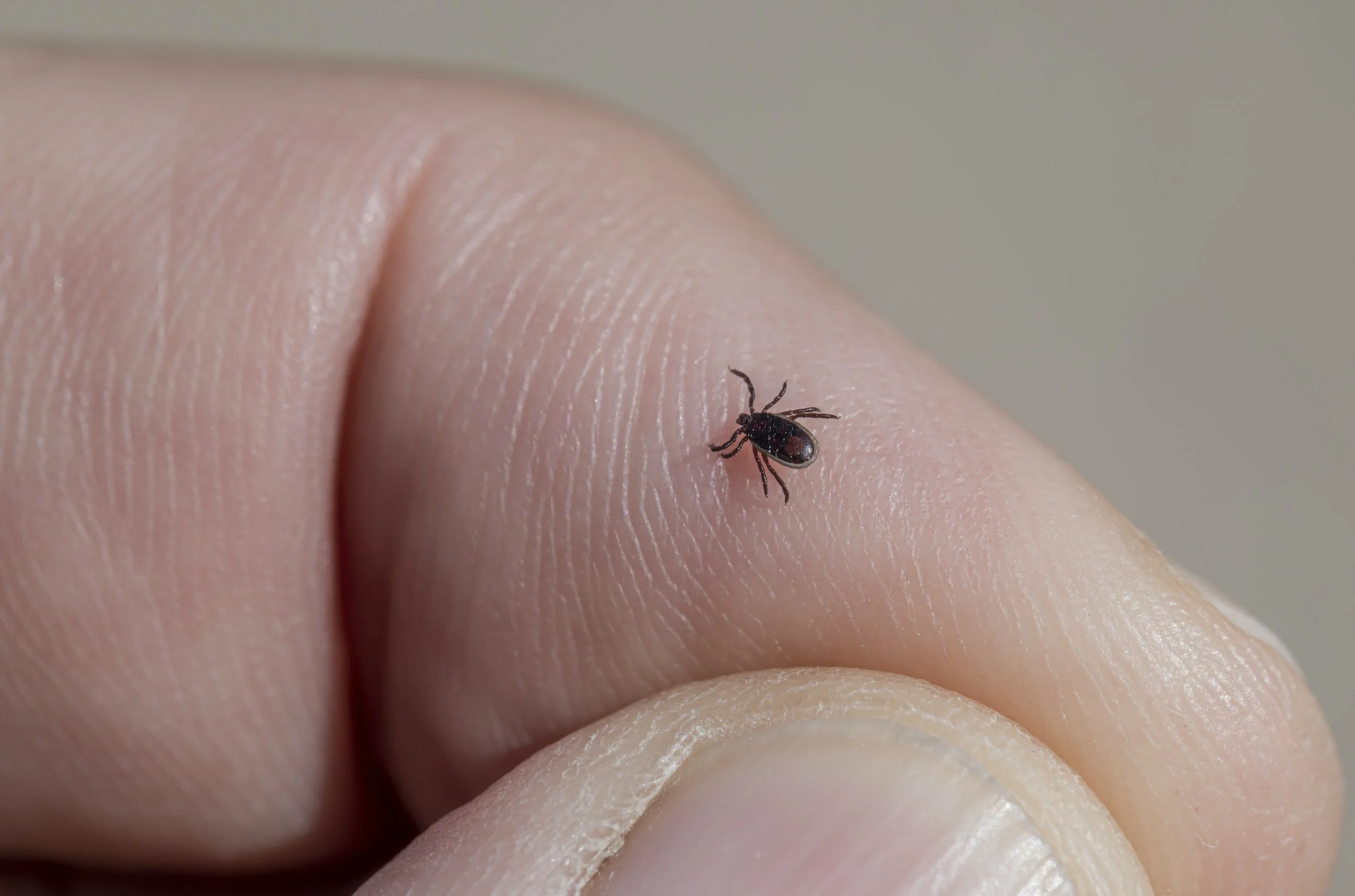Submitting a tick for testing
What are tick-borne diseases?
Tick-borne diseases are those spread by the bite of an infected tick. These diseases can be caused by bacteria, parasites, or viruses, although the diseases caused by bacteria are most common. Several tick species found in Connecticut can spread types of bacteria that can cause illness in humans, and infection with more than one is possible through one tick bite.
To find out what type of tick, and potential disease it could be carrying, you can bring your tick to CCHD and we will submit it to the Connecticut Agricultural Experiment Station (CAES). Please fill out the Tick Submission Form to bring with you to the Health District to submit your tick: Tick Submission Form.
Who may submit a tick?
Ticks will be accepted only from residents of Connecticut. Ticks should be submitted by residents to their municipal health departments. The health departments will then submit ticks to us with a request for identification and/or testing for the causative agents for Lyme disease, anaplasmosis, and babesiosis.
How much do you charge to test a tick?
Tick testing is offered by The Connecticut Agricultural Experiment Station as a public service and there is no fee for tick identification and/or testing. Municipalities or local health departments/districts may charge a nominal fee for handling and mailing.
What information should be submitted with the tick?
The CAES Tick Submission Form should be completely filled out and packaged along with your tick. Please read the entire form carefully to ensure you are providing the proper information. Please leave a note if you are submitting more than one tick with a single submission form.
Preparing the tick:
Do not place the tick on tape.
Ticks should be placed in a crush-proof container, but if one is not available a sealed plastic bag will suffice.
Do not package the tick in glass or in other fragile containers.
Do not package the tick with any objects. This includes paper towels, cotton swabs, plant matter, bandages, or any other materials.
Do not place the tick in any solution. This includes substances like water and alcohol. All ticks should be submitted dry.
Preparing the envelope:
The crush-proof container housing the tick should be tightly sealed and packaged in a padded envelope.
If a padded envelope is not available, a small sheet of bubble wrap can be added to a regular envelope to help protect the tick from being damaged.
The form can be filled out and printed in your internet browser and is available here:
Do all ticks submitted get tested for Lyme disease?
We accept all ticks for identification but only test those who have a risk of transmitting the causative agents of Lyme disease, anaplasmosis, and babesiosis to a human host. Due to limited resources at the Tick Testing Program and relatively small percentage of ticks infected, ticks are not currently tested for Powassan virus. However, in view of the potential human health risk, preparations are underway to test ticks for this virus, in addition to the other pathogens. Ixodes scapularis, also known as the blacklegged or deer tick, is the primary vector for these pathogens and is the only species of tick tested in our lab. We do not test the American dog tick (Dermacentor variabilis), or the lone star tick (Amblyomma americanum) as they are not vectors for the aforementioned disease-causing agents.
Larval ticks of all species are not tested as they have not had the opportunity to become infected with any pathogens. Ticks that are unengorged are not tested. Ticks need to feed for nearly 40 hours to transmit the causative organisms of Lyme disease to humans, though this may vary for anaplasmosis and babesiosis. Ticks without blood in their midguts have not been attached long enough to pose a risk of infection. Male ticks are not tested as they rarely and briefly engage in blood-feeding and have not been documented to transmit pathogens.
Due to limited resources, we only test ticks that have fed on humans. If you submit a tick found on your pet, it will be identified to the species level and engorgement status but will not be tested.
How are results communicated and how long does it take to receive a report?
Results are communicated via e-mail only. Please wait for communication from the Tick Testing Laboratory for results. Phone inquiries cause delays in the analyses of ticks. If you submitted your tick through your health department they may communicate the results to you as well.
Reporting time depends largely on the number of ticks received throughout the year. During high points in tick activity, processing time may be delayed. Ticks are tested on a first-come first-serve basis.


